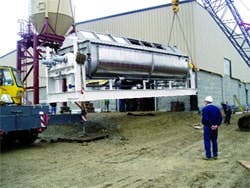Growing with the Flow
Located in southwest Ohio, between the cities of Cincinnati and Dayton, is the growing metropolis known as Mason. Founded in 1815, Mason has attracted large corporations such as Cintas and Procter & Gamble’s Health Care Research Center. Additionally, on the leisure side, it is home to Paramount’s Kings Island, The Beach Waterpark and the Tennis Masters Series Cincinnati tournament won in 2004 by Andre Agassi.
With all this activity, the population, which doubled between 1990 and 2000, continues to grow and is currently more than 27,000. The water reclamation plant—built in 1964 and expanded twice, most recently in 1995—has finally been outgrown.
In April 2003, Finkbeiner Pettis & Strout (now Arcadis), a full-service engineering firm, released the specifications for a Greenfield plant designed for to meet the future growth of Mason. The 36-acre site is located one mile downstream from the existing facility.
With an initial flow of 8.67 mgd, the secondary activated sludge plant is designed to handle 13 mgd. The influent first passes through plate screens with 8-mm openings, and enters two oxidation ditches for biological treatment. The influent is then sent to the final settling tanks. The sludge age is approximately 20 days before it is thickened in gravity settling tanks. Holding tanks precede centrifuges that feed a Komline-Sanderson biosolids drying system. The biosolids are dried at a rate of 4 wet tons per hour at 20% solids and exit the dryer at 92% solids, producing a Class A dried biosolid product. The system cools the hot, dry biosolids prior to transporting them in a dense-phase pneumatic conveyor to a 6,000-cu-ft silo equipped with truckload out devices.
The city of Mason has more than 240 acres of parks, allowing the dried biosolids to be spread on the city-owned land. For odor control, the low volume of off-gas is compressed after the spray tower condenser and directed to coarse bubble diffusers in the oxidation ditch.
“The city already reclaims about 7% of the wastewater for use on local golf courses in addition to in-plant water reuse,” said Keith Collins, assistant superintendent for the city of Mason. “By building this new water reclamation plant and including the installation of the Komline-Sanderson biosolids drying system, Mason is building for the future.”
Collins said he is positive that the system will allow the recycling of biosolids for beneficial reuse. “This was an important consideration for the city council in planning the new facility.”
